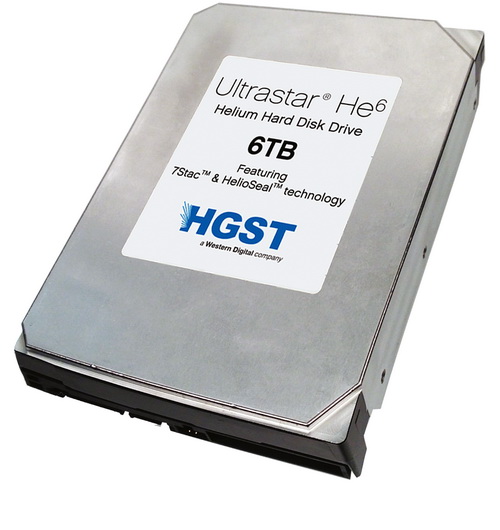INTRODUCTION
I've been using computers for almost 25 years now (14 of which professionally) and if someone asked me to choose a single hardware component that hasn't changed even a bit in terms of functionality since the day i ordered my very first system that would definitely be mechanical hard disk drives. Since 1989 I’ve used and tested well over 100 models (both consumer and enterprise ones) with capacities ranging from just a few Megabytes and up to several Terabytes but with the exception of SSDs and SSHDs (which is basically a marriage of both technologies) i can't say that the way HDDs function has changed, not really anyways. HGST took a step towards changing that roughly a year ago when they announced the upcoming Ultrastar He6 line of enterprise oriented hard disk drives and today after quite a bit of wait we finally have the SAS 6Gb/s variant with us.
HGST, a Western Digital company (NASDAQ: WDC), develops innovative, advanced hard disk drives, enterprise-class solid state drives, external storage solutions and services used to store, preserve and manage the world’s most valued data. HGST addresses customers’ rapidly changing storage needs by delivering intelligent storage devices that tightly integrate hardware and software to maximize solution performance. Founded by the pioneers of hard drives, HGST provides high-value storage for a broad range of market segments, including Enterprise, Cloud, Datacenter, Mobile Computing, Consumer Electronics and Personal Storage. HGST was established in 2003 and maintains its U.S. headquarters in San Jose, California. To find out more about HGST enterprise-class HDD, SSD and SW solutions, please visit www.hgst.com.
For the Ultrastar He6 line of HDDs HGST took a different path and so instead of using regular air inside the drive just like every HDD out in the market currently they decided to use the much lighter Helium gas. So since Helium has one-seventh the density of air it allows for all 7 disks/platters inside the drive to spin easier and thus faster due to less resistance/friction which in turn naturally results in reduced power demands and temperatures. It goes without saying that i don't expect to witness miracles in terms of read/write performance just by swapping air for Helium but if HGST is right in time this technological advancement could help reduce the performance gap between HDDs and SSDs while at the same time it could also improve reliability (the He6 already has a 2 million hours MTBF) and further expand the already large price/capacity ratio gap. For now we can only check the performance aspect of the Ultrastar He6 6TB SAS 6Gb/s drive so let's do it.

 O-Sense
O-Sense








.png)

